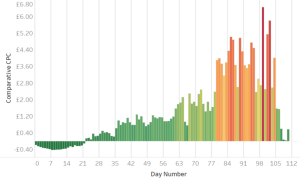If you are planning to integrate your sales, marketing, or ERP systems and need to know how to best structure the project, here is a simple five phase approach to setting up a successful tech stack integration project.
1. Discovery
The discovery phase defines the “what” of the project: What are the business objectives, what are the requirements, and what are the systems involved?
During this phase, you should gather all of the information needed to be successful. If the systems have documentation, gather that for use in later phases. You should also document the mappings between systems. If there are files involved, you should document the layouts of the file, where the individual fields should map to in each target system, and any transformation of the data that is needed.
To help with design and testing, it may be helpful to take the business requirements and create a traceability matrix. This will keep design in line with requirements and will provide testing the blueprint needed to develop a test plan.
Once this phase is complete, it is suggested to have a sign-off to ensure everyone is aligned on what the project includes and success criteria.
2. Design
The design phase is where you define how the project will work. This phase is where the technical aspects of the integration start to come together. Do the systems you are integrating have native applications that will do the integration for you? Do you need a middleware or integration platform as a service (IPaaS) to connect the systems? Should you handle any of the software development internally?
After identifying how the integration will be built, the logic behind how the data will be shared between systems should be documented. Any rules for preventing duplication, or performing data cleansing and data hygiene, should also be included in the documentation.
Once the design is complete, a meeting may be needed to make sure the design meets the requirements of the project.
3. Build
The build phase is exactly as it sounds. This is where the design is built into an integration. The two main pieces to a build phase are:
- Development or workflow creation
- Unit testing the work
Simple test cases should be provided to verify any logic branches with the code, or to verify that the workflows perform as expected. If a developer is doing this task, they could be assigned to work with a tester to verify the test cases and logic is being fully vetted.
4. Quality Assurance and User Acceptance
The quality assurance and user acceptance phase is where all testing is completed. The first part of this phase is executing the test plan as defined during the discovery phase. This plan should test all of the business requirements and verify that the integration meets the needs of the project. If the project is a change to an existing integration, regression testing may be required.
After all internal quality assurance testing is complete, user acceptance can begin. This could be done by presenting the findings of the test plan, a demo of the integration, or allowing the end user to run their own series of tests. This final check allows the end user to verify that the integration project is complete and meets their objectives.
5. Deployment
The end goal of the project is deployment of the integration. To successfully deploy, there may need to be a few considerations. First, should the initial sync of the data run against both systems’ existing data or only new data coming in? Is there any setup needed for deployment? Is there a preferred time to execute the first sync?
Deployment takes some amount of planning, but in doing so, you can ensure your tech stack integration project is successful.
Business & Finance Articles on Business 2 Community
(73)
Report Post






